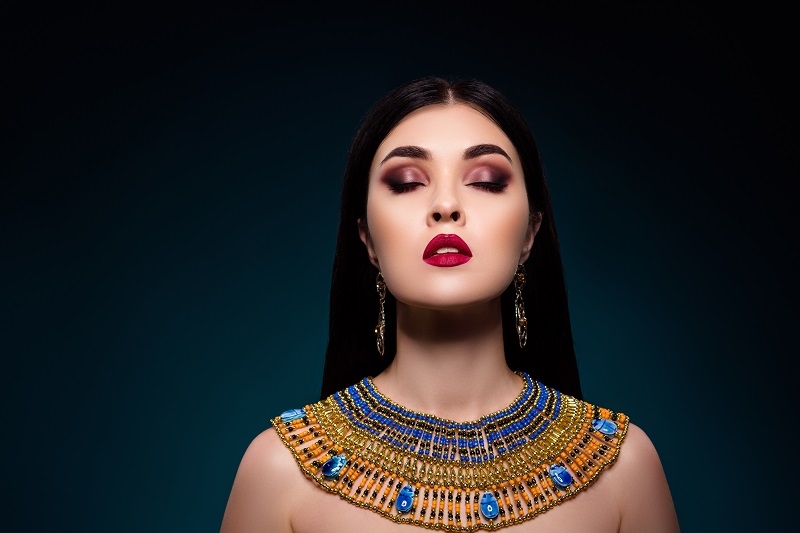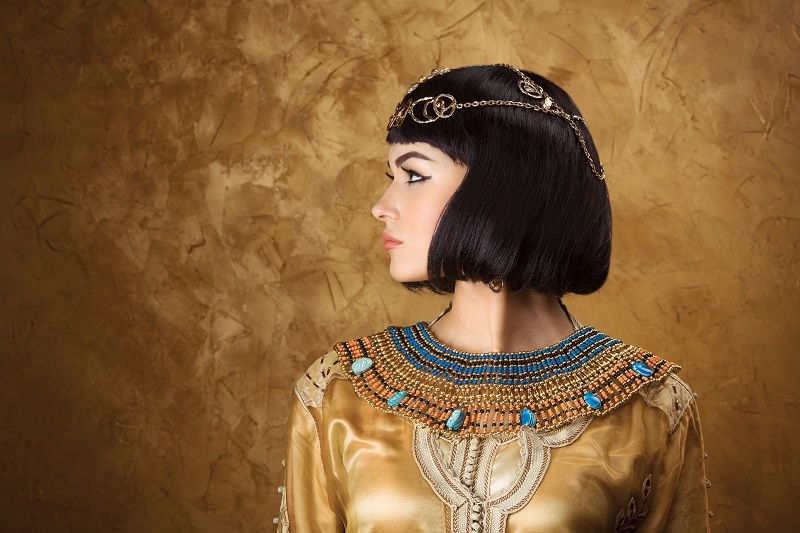
In the tapestry of ancient Egyptian society, every single thing in life had deep cultural and symbolic meanings. Egyptians represented their social hierarchies, beliefs, and personal identities in many ways, from their architectural grandeur to the minutest details of their daily wear. Among these, hair length and hairstyles were critical markers of cultural expression and social status in Ancient Traditions. In ancient Egypt, hair was more than a biological aspect; it had become a symbolic art and a sign of an individual's status within the social, religious, and political spheres in which they operated.
Hair length and type were great symbols of status and place in society during ancient Egypt. The elite could not wear their hair in these long styles unless they had sufficient means and rank; for those with wealth, wigs represented a status of wealth and power. Nobility and royalty usually shaved their head and wore fantastic wigs created from human or human-animal fiber. Their heads would have beads, gold, and other precious stones glued into these elaborate locks as a form of public proclamation of their privileged position.
Commoners, on the other hand, cut or shaved their natural hair primarily for convenience. Egypt's dry atmosphere made short hairstyles more manageable and hygienic. Workers and farmers prioritized utility before adornment. Nonetheless, the working class did not neglect their hair maintenance. Oils, combs, and modest adornments were employed to keep hair clean and presentable, demonstrating the general significance of cultural hair in Egyptian society.
In the ancient Egyptian religion, hair carried a deeper sense of spirituality. A shaved head or particular style could mean someone is devoted to the religion. For example, priests shave off all the hair on their heads, as baldness stands for purity. It is in their ritual practice as they seek to be with the gods at the temples. The lack of hair is what eliminates impurities; therefore, the priest has the opportunity to remain clean from a spiritual aspect.
Children's hairstyles also had symbolic significance. Young boys and girls usually had their heads shaved, with the exception of a single "lock of youth," a particular tuft of hair, to symbolize their childhood and link to the god Horus. This lock of hair was commonly represented in tomb art and statues, indicating its cultural and religious significance. When children reached maturity, the lock of hair would be shaved, signifying their entry into adulthood.
In ancient Egyptian society, hair length and styling were also very closely related to gender norms and roles. Both men and women considered their hair to be very important, but their preferences and practices often differed.
Practically, this was due to the hot weather and the concern for hygiene among men. Other men would often shave their hair or have their hair cut really short. Others, however would wear styled wigs, not necessarily for adornment but in order to carry out their prestigious careers as scribes and officials in order to appear distinguished and refined, with layers and curls made delicately.
Women's hair, however, tended to be much longer and dressed in greater detail. Lengthiness was the expression of femininity and beauty. Women's hair styles were just braids in simple designs but also highly decorative with beads and ribbons plaited all over the length. Wigs were worn very frequently by upper-class women similar to their brothers, for much more versatility with styles while they protected their hair. These wigs served both practical and symbolic purposes, offering protection from the sun and signifying wealth and status.
Wigs were perhaps the most iconic element of Egyptian hairstyling, bridging the gap between practicality and luxury. They were worn by both men and women and served as an essential aspect of daily life and ceremonial occasions. For the wealthy, wigs were masterpieces of craftsmanship, often made from human hair and enhanced with decorations such as gold threads, jewels, and aromatic resins.
It was not different, however, for the climatic conditions in Egypt to necessitate the use of wigs. The removal of natural hair helps one keep cool and prevent lice infestations. Wigs, as another alternative, were used and provided a fashionable and clean way on different occasions by being changed.
It is fascinating to note that the use of wigs did not end when life ended. Many mummies were found wearing wigs or elaborate hairstyles etched into tomb walls. These showed the significant importance attached to hair in the afterlife, with a firm belief that a good appearance would assure comfort and recognition in the afterworld.

Ancient Egyptians took hair care seriously, it was considered as a part of Historical Grooming. They used several tools and products to take care of their locks. Wood, bone, or ivory combs were popularly used to comb out the hair and arrange it as desired. Hair conditioners and moisturizers made from castor oil, almond oil, or animal fats were used to protect hair from the sun, and dryness was avoided.
Henna was yet another widely applied product that also served as both a hair colorant and protective treatment. It was applied on the hair as well as on the nails to give it that reddish look, which, at the time, was very beautiful and signified vitality. Using perfumes and scented oils further stressed personal grooming and the aromatic nature that hairstyles could take.
Ancient Egyptian art and literature offer insights into the cultural significance of hair length and style. Wall paintings, statues, and reliefs often show individuals with different hairstyles that symbolize their social roles and personal identities. Pharaohs, for example, are often depicted wearing the "Nemes" headdress, a striped cloth that symbolized their divine authority, often covering a shaved head or wig.
Symbolism with hair has been seen through various literatures as well. According to the numerous texts, hair is the ornamental beauty item that brings attraction and praise often in conjunction with fertility and vital life forces. In New Kingdom love poetry, for instance, it talks of the hair being the seduction of the loved one by equating it with riches like gold and lapis lazuli.
Hair length and coiffure became a part of mourning and mortuary rituals too. Women normally kept their hair loose or rumpled during time spent in bereavement as an expression of their grief. It was absolutely contrary to neatly coiffured and styled locks during other occasions in life as the expression of that bereavement had much intensity to it.
Hair in funerary contexts is also related to rebirth and regeneration. Locks of hair sometimes accompany burial offerings to symbolize life force and protection. The goddess Isis, central to the myths of resurrection, is also represented with flowing hair in the myths, which indicates the association of hair with life and continuity.
Ultimately, hair length and style became strong identity identifiers in ancient Egypt. Hair presented information about a person's age, gender, social rank, profession, and religious affiliations. Such care and attention to hair demonstrate its essential position in personal as well as communal expressions of culture.
Hair is both an attribute and a dynamic aspect of Egyptian visual language. Hair served as a medium for storytelling and self-expression, whether in the form of an opulent wig, the simplicity of a shaven head, or as a sign like a child's sidelock.
Hair length had a lot more value in ancient Egyptian culture than just beauty. It represented social rank, religious commitment, gender identity, and self-expression. Hair has shaped one of the amazing identities and customs of history, from shaving the head for practical reasons when people had to work in the desert sun to carefully creating wigs into masterpieces of artwork.
Egypt's ancient haircuts leave up our imagination as a window to their perspectives, values, and ways of life in how they regarded hair- both as functionality and further indication of their position in this world. To learn from their hair trends opens not only windows into the outer beauty of the early times but also these inner meanings that defined their view of life and death, the divine, and so much more.
This content was created by AI